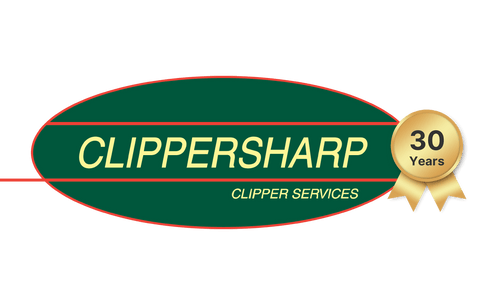Choosing the correct grade of blade for the finish that you are looking for will really help achieve a perfect clip. Here are a few guidelines to help you make a choice.
If you have a very heavy coated horse, then it’s best to start with a medium grade for the first clip, if you decide a closer clip would be preferable thereafter, move on to a fine blade for the second and subsequent clips.
He is a rough guide to depth of cutting, although some clipper manufacturers do vary on their grading measurements, so always best to double check manufacturers details on the packaging.
Surgical – 1.00mm
Fine – 1.4mm
Medium 2.0mm
Coarse 2.5mm
Covercote (Lister brand) 5mm
For horses and ponies that have coats that are either matted or curly and thick which can be caused from having Cushings Disease, then a coarse blade may have to be used in the first instance. This can leave a rather rough finish on a newly clipped coat but it does the job for getting through really difficult types of hair. If a smoother finish is required, then clip again with medium blades which will give a 2.0 mm finish.
With dense, or fast-growing coats, it is easier to clip every 2-3 weeks using a medium or fine blade, this will ensure the finish is good and is much easier to keep on top of, particularly during the winter months.
For fine or soft coated animals, a fine blade which cuts to around 1.4 mm will give a very close but neat finish. However, if you have a grey, you are best to keep to a medium grade to avoid teeth lines, which tend to show up more on light coloured areas.
If you are clipping during the summer months, then either a medium or fine grade will be fine on virtually all types of summer coats and give a smart smooth finish as well as ensuring the horse is kept comfortable during warmer weather.
For blending in a body clip to legs, again, either choose a coarse type blade to gradually blend into where the leg hair starts, or turn the clipper blade over and lightly stroke the blade in a downwards action, a bit like brushing hair. This will take less hair off and the hair can be blended in evenly.
Some manufacturers provide specialists blades that can cope with the tough and challenging conditions. Lister Shearing does tend to have the most comprehensive range of blades to choose from for using on all types of large domestic and farm animals.
The Lister Covercote blade that they manufacture is probably one of the most useful blades for blending and skimming over an existing coat. It cuts to around 5.00 mm and is suitable for just skimming over a coat which is just starting to grow in late summer. It is ideal for keeping show horses’ coats looking like they are still in a full summer coat and is an ideal solution for taking off cat hairs and sprucing up spring coats too.
Whilst using a body blade, be mindful when changing over to a smaller machine or trimmer for doing the sensitive and fiddly areas. Check that the trimmer blade cuts to the same length that the larger clipper has been clipping at, as otherwise it will be obvious on the finish that two different types of blades have been used.
Heads are sometimes quite difficult to get a good finish, again, less is more, don’t be tempted to clip too close on heads and particularly on white or light-coloured animals, as teeth lines really do show up and tend to stay obvious for quite some time.
